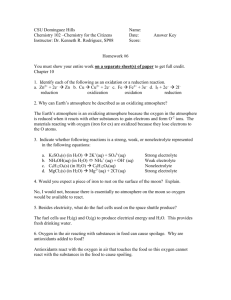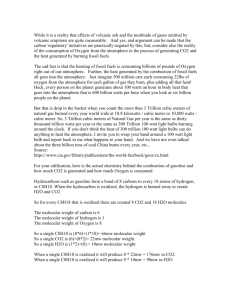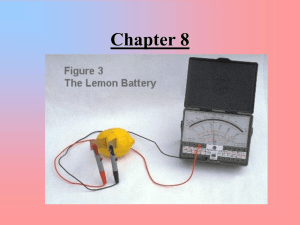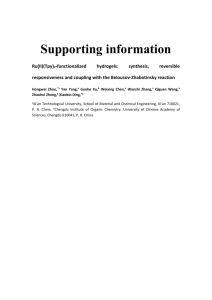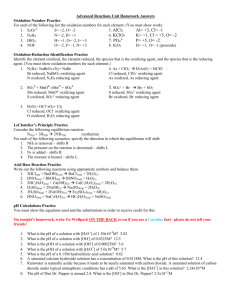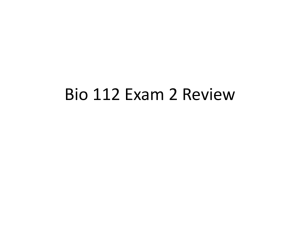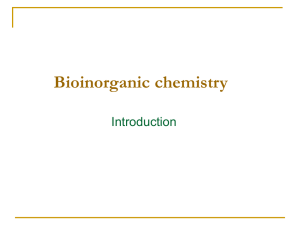HomeworkCh_10Answers
advertisement
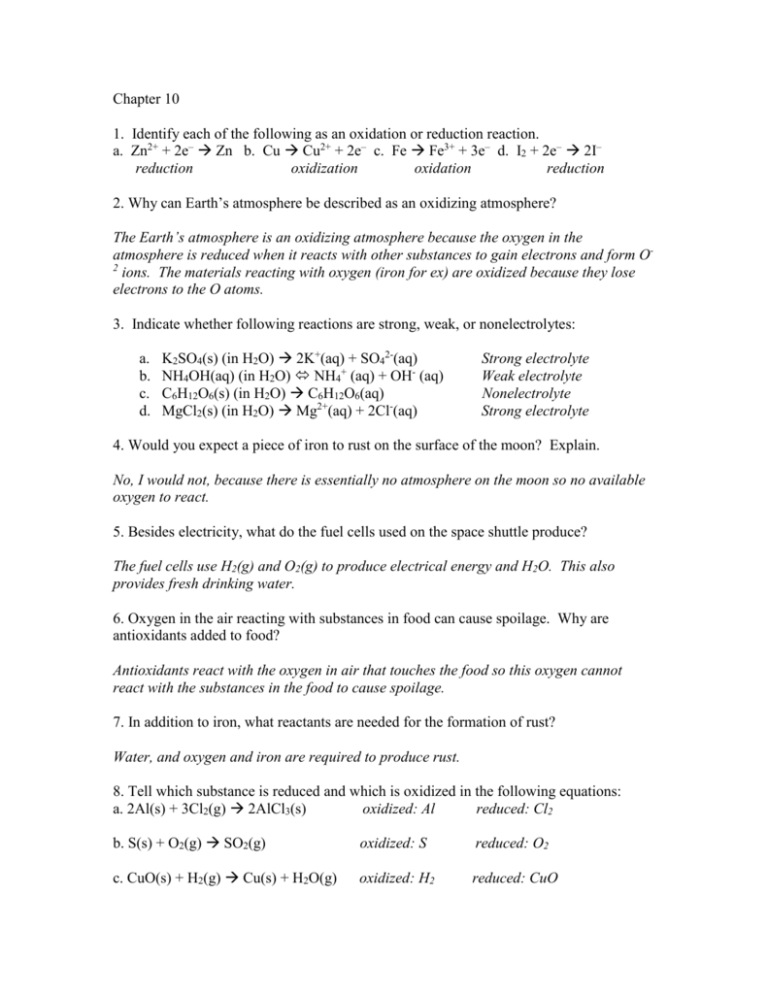
Chapter 10 1. Identify each of the following as an oxidation or reduction reaction. a. Zn2+ + 2e– Zn b. Cu Cu2+ + 2e– c. Fe Fe3+ + 3e– d. I2 + 2e– 2I– reduction oxidization oxidation reduction 2. Why can Earth’s atmosphere be described as an oxidizing atmosphere? The Earth’s atmosphere is an oxidizing atmosphere because the oxygen in the atmosphere is reduced when it reacts with other substances to gain electrons and form O2 ions. The materials reacting with oxygen (iron for ex) are oxidized because they lose electrons to the O atoms. 3. Indicate whether following reactions are strong, weak, or nonelectrolytes: a. b. c. d. K2SO4(s) (in H2O) 2K+(aq) + SO42-(aq) NH4OH(aq) (in H2O) NH4+ (aq) + OH- (aq) C6H12O6(s) (in H2O) C6H12O6(aq) MgCl2(s) (in H2O) Mg2+(aq) + 2Cl-(aq) Strong electrolyte Weak electrolyte Nonelectrolyte Strong electrolyte 4. Would you expect a piece of iron to rust on the surface of the moon? Explain. No, I would not, because there is essentially no atmosphere on the moon so no available oxygen to react. 5. Besides electricity, what do the fuel cells used on the space shuttle produce? The fuel cells use H2(g) and O2(g) to produce electrical energy and H2O. This also provides fresh drinking water. 6. Oxygen in the air reacting with substances in food can cause spoilage. Why are antioxidants added to food? Antioxidants react with the oxygen in air that touches the food so this oxygen cannot react with the substances in the food to cause spoilage. 7. In addition to iron, what reactants are needed for the formation of rust? Water, and oxygen and iron are required to produce rust. 8. Tell which substance is reduced and which is oxidized in the following equations: a. 2Al(s) + 3Cl2(g) 2AlCl3(s) oxidized: Al reduced: Cl2 b. S(s) + O2(g) SO2(g) oxidized: S reduced: O2 c. CuO(s) + H2(g) Cu(s) + H2O(g) oxidized: H2 reduced: CuO d. C2H4(g) + H2(g) C2H6(g) oxidized: H2 reduced: C2H4 9. The main source of magnesium in seawater is Mg2+ ions. Is this magnesium in an oxidized or reduced form? Magnesium is oxidized as a Mg2+ ion because Mg metal has a zero charge. The element loses two electrons when it forms the Mg2+ ion. 10. There are how many equivalents in the following ions: a. 1 mole of Cu2+ b. 1 mole of Brc. 2 mole of Na+ 2 1 2x1=2 d. 1 mole of N31
